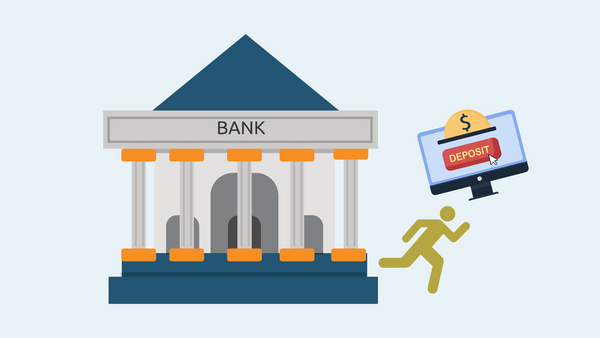
My unique view into the Silicon Valley Bank, SVB, collapse
Compared to many others, I have had a unique view of the collapse of the Silicon Valley Bank, SVB. Here's how this happened.
Last week Silicon Valley Bank, SVB, was shut down by regulators after a “run on the bank.” Meaning that depositors quickly moved to withdraw large sums of money.
I’m going to share with you answers to the questions I am getting as someone who 1) has been in the banking industry for 20+ years, 2) has had a unique viewpoint into how a financial institution is run as a member of the C-suite, 3) just a few months ago received a job offer from SVB.
I want to be careful here. I’m not writing this to jump on the SVB news bandwagon and certainly not to disparage anyone that was involved with SVB. But I do have a unique perspective compared to many of the people I see talking about this news, and I’m getting questions from people that know my background.
Silicon Valley Bank’s business model
To understand how this happened, you must understand the bank’s business model because its target market is what made the bank so unique.
I learned about SVB when I was launching the Line12 Fund. That fund was a venture debt program for ideation-stage startups. The credit union I was Chief Lending Officer at lent out $10k-$100k to startups with very little traction. We de-risked that loan by securing a Small Business Administration guarantee, which covered 50% of the loan amount. Essentially we were lending out no more than you would on a normal consumer credit card.
Silicon Valley Bank was unique, compared to other traditional banks, in that the majority of its customers were venture-backed startups. According to their own website, 88% of all Forbes’ 2022 Next Billion Dollar Startups, 50% of all US venture capital-backed tech and life sciences startups, and 44% of all US venture capital-backed startups that had an IPO in 2022 banked with them.
Essentially they were in the business of providing venture debt. At a much, much larger scale than my Line12 Fund.
What caused the Silicon Valley Bank, SVB, to collapse?
Layoffs have been stacking up, particularly in the startup industry and within that the tech sector. Which, as noted above, SVB focused heavily on. On top of that, the Fed had been raising interest rates, which made debt more expensive. At the same time, rising interest rates gave investors other avenues for a strong return that carries less risk.
All that added up to tougher times for startups to raise capital. So, startups have been chewing through cash, and they have been pulling money out of banks like SVB to fund their liquidity needs.
Banks don’t keep all of their depositor's cash lying around. They put it to work in investments and in loans to other companies. If you ever want to see how a federally-insured financial institution is performing, you can pull up their call report, which is a quarterly report detailing their positions.
As of their 12/31/2022 call report, SVB had about $12.4B in cash. According to Fortune magazine, depositors withdrew $42B. Which meant the bank had to sell other assets to fund those withdraws.
So, 1) rising interest rates, 2) SVB focused on startups, 3) startups begin struggling and need cash, 4) and deposits flow in mass out of the bank. That all equates to a “run on the bank.”
My opinion is that a lack of diversification in their customer base, along with some other bad decisions, is at the root of the collapse.
What happens now?
There are a few ways this can play out.
The Fed could step in, insure everyone’s deposits beyond the typical $250k limit, and backstop the bank. When this happens, they put the bank in conservatorship (i.e., take over running the bank). However, Janet Yellen, Treasury Secretary, has said that the government will not bail out the bank.
What’s more likely to occur is that the Fed will broker a deal whereby a third party will purchase the bank and guarantee some portion, or all, of its customer’s deposits with the support of the U.S. government.
Looking past the dynamics of how this happened, I find it really sad. I’ve respected the SVB model for some time simply because it formed a bridge for startups that needed capital when most other lenders wouldn’t have touched the startup.
It is extra sad for all of the great people that work at SVB. As part of my interview process, I got to know quite some really smart people. And the truth is that their leaders failed them.
If you’ve found this information helpful, I hope you’ll do two things for me.
1) Subscribe to this newsletter. That way, new copies are delivered directly to your inbox.
2) Share this newsletter with one other person that you think might benefit from the information I share.